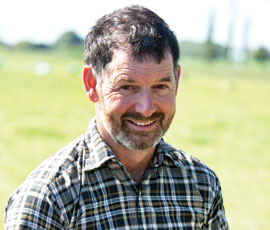New Zealand: Economic growth goals conflict with environmental impact

Farmers Weekly rounds up a year’s news through the eyes of farmers across the globe. Today we hear from George Moss in New Zealand
George Moss farms a 74ha conventional dairy, milking 185 Friesian cows as well as a 70ha conversion organic dairy farm, near Tokoroa, New Zealand.
It has been a year of two halves. We started out looking at very good prices for milk, wool and meat, and a great season climatically allowing farmers to achieve record production.
Then the high New Zealand dollar and weak demand globally during autumn meant prices fell for all classes of primary produce. The winter and spring have proved challenging; after excessive moisture and low soil temperatures, now farmers are looking for both rain and warmth. Very little surplus grass has been harvested, which will mean an inevitable rise in feed costs.
Key facts
Population 4.4 million
Average rainfall 640-1,500mm
Agricultural area 11m ha
An increase in the dairy herd means that the 6.2m cows now outnumber people. Sheep numbers are seven times higher than the human population
On a positive note, Fonterra successfully modified its constitution, which will allow farming shareholders to trade a proportion of the economic rights to the value-added part of the co-operative in the form of units. This will give shareholders greater flexibility.
Primary industry, and dairying in particular, is under real pressure to reduce impact on the environment. There has been much emotion around this topic and the nation is struggling with the conflicting demands of economic growth and environmental integrity. I am increasingly confident that the facts and improved farming practices will lead to an outcome we can all live with.
I wish all farmers a great festive season and may the new year bring some respite from challenges we face.
Read the latest updates from our Arable and Livestock Farmer Focus writers
